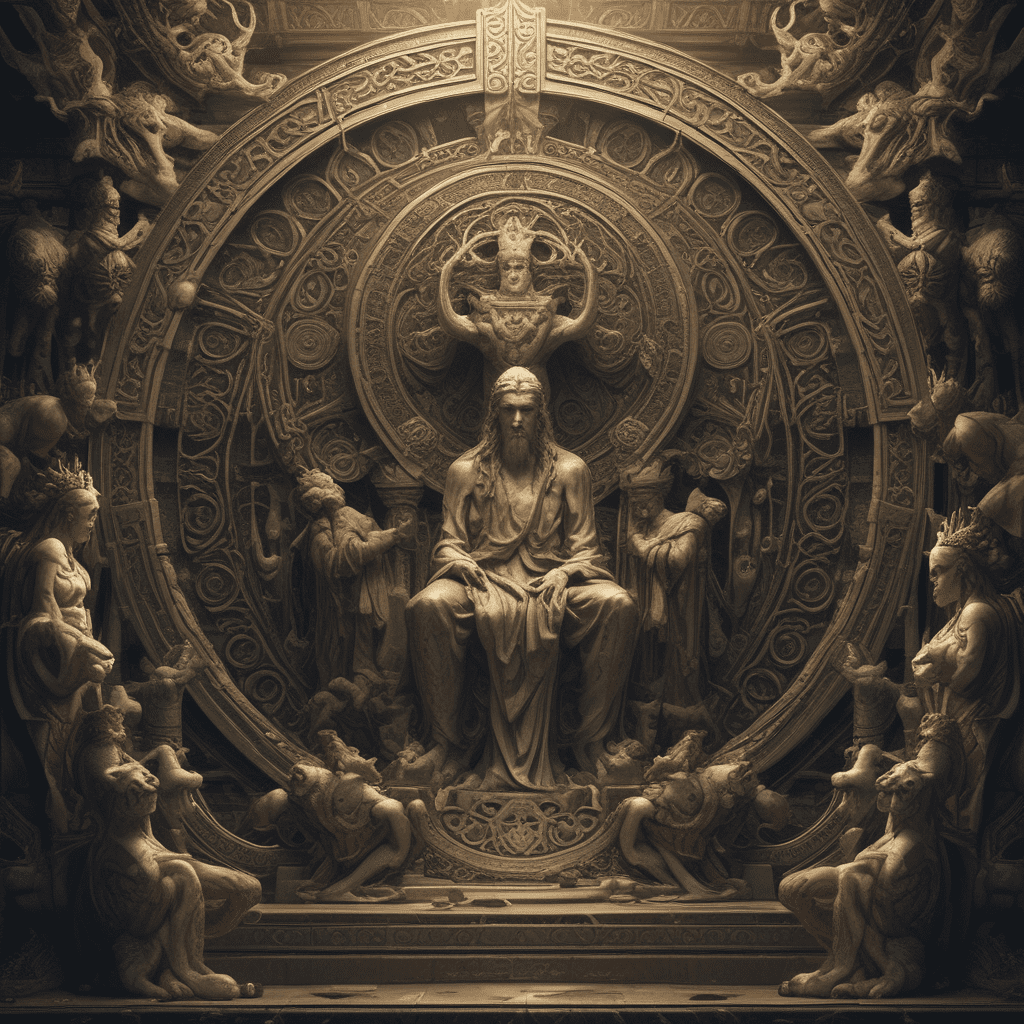The Huldra’s Language: Exploring the Spirit’s Communication and Meaning
I. Introduction
The Huldra is a captivating figure in Scandinavian folklore, often depicted as a beautiful woman with a cow’s tail, who resides in the forests and mountains. This enigmatic spirit is known for her alluring voice and enchanting presence, drawing people into her world. Understanding the Huldra’s language is crucial for grasping the cultural significance of such spirits and their interactions with humans.
Language serves as a bridge between the realms of the human and the supernatural, enabling communication that goes beyond mere words. The purpose of this article is to explore the Huldra’s language, the ways it manifests, and its implications in folklore and contemporary culture.
II. The Mythology of the Huldra
The Huldra’s origins trace back to Norse mythology, where she is often portrayed as a guardian of the forest, embodying both beauty and danger. Traditionally, she is seen as a protector of nature, yet her enchanting allure can lead to perilous encounters with humans.
Characteristics of the Huldra include:
- A stunning appearance that can captivate any onlooker.
- A tail resembling that of a cow, which she often hides.
- A deep connection to the natural world, particularly forests and waterways.
In modern interpretations, the Huldra has been reimagined in various forms of media, symbolizing a return to nature and the mystical aspects of the wilderness.
III. The Concept of Spirit Communication
Spirit communication in folklore refers to the ways in which entities from the spiritual realm convey messages, emotions, and intentions to humans. This can occur through various methods, including:
- Verbal communication, often using metaphors or symbolic language.
- Non-verbal cues, such as gestures, sounds, and silence.
- Environmental interactions, where spirits communicate through nature.
Language plays a pivotal role in shaping these interactions, as it encodes the meanings and intentions behind the messages conveyed by spirits like the Huldra.
IV. Linguistic Features of the Huldra’s Language
The Huldra’s communication is rich in sound and tone. Her voice is often described as melodious and haunting, capable of invoking a range of emotions in those who hear it. The following elements characterize her language:
- Elements of Sound: The Huldra’s calls are said to mimic the sounds of nature, such as flowing water or rustling leaves, enhancing her connection to the environment.
- Symbolism and Metaphors: The Huldra often uses metaphorical language to express her desires and intentions, drawing from the natural world to convey complex emotions.
- Significance of Silence: Moments of silence in Huldra communication can be just as powerful as spoken words, often suggesting contemplation or the weight of unspoken truths.
V. Case Studies: Encounters with the Huldra
Throughout history, there have been numerous accounts of encounters with the Huldra. These stories often illustrate the unique communication methods employed by the spirit:
- Historical Accounts: Many tales recount how travelers who strayed into the woods were lured by the Huldra’s enchanting song, leading to both joy and trepidation.
- Analysis of Communication: In these encounters, the Huldra’s use of beauty and song often serves to mask her more dangerous intentions, revealing the duality of her character.
- Lessons Learned: These stories highlight the importance of respecting nature and the unseen forces that inhabit it, urging humans to tread carefully in the wilderness.
VI. The Huldra’s Language in Contemporary Culture
In today’s society, the Huldra continues to inspire various forms of artistic expression. Her representation in literature, film, and art reflects a growing interest in folklore and the languages of spirits:
- Literature: Modern authors often incorporate the Huldra into their narratives, exploring themes of nature, femininity, and the supernatural.
- Film and Art: The Huldra’s ethereal beauty and mystique are frequently depicted in visual arts, capturing the imagination of contemporary audiences.
- Revival of Interest: There is a renewed fascination with folklore and its languages, as people seek to connect with their cultural heritage and the natural world.
This revival has also influenced modern spiritual practices, where elements of the Huldra’s language and lore are embraced as part of personal belief systems.
VII. The Role of Nature in Huldra Communication
The Huldra’s communication is deeply intertwined with the natural environment. Nature not only influences her language but also serves as a medium for her expressions:
- Connection to the Environment: The Huldra embodies the spirit of the forests, and her language echoes the sounds and rhythms of nature.
- Influences on Communication Patterns: Her interactions are often tied to specific landscapes, such as mountains, rivers, and meadows, which shape the messages she conveys.
- Significance of Landscapes: The ecosystems in which the Huldra resides are integral to her identity, emphasizing the symbiotic relationship between spirit and nature.
VIII. Conclusion
In summary, the exploration of the Huldra’s language reveals a rich tapestry of communication that blends beauty, danger, and deep connections to nature. The enduring legacy of the Huldra in cultural memory highlights the importance of folklore and its languages in understanding our relationship with the natural world.
As we continue to explore the nuances of spirit communication, future research may delve deeper into the linguistic features and cultural significance of spirits like the Huldra, fostering a greater appreciation for the interplay between humanity and the mystical forces that surround us.


